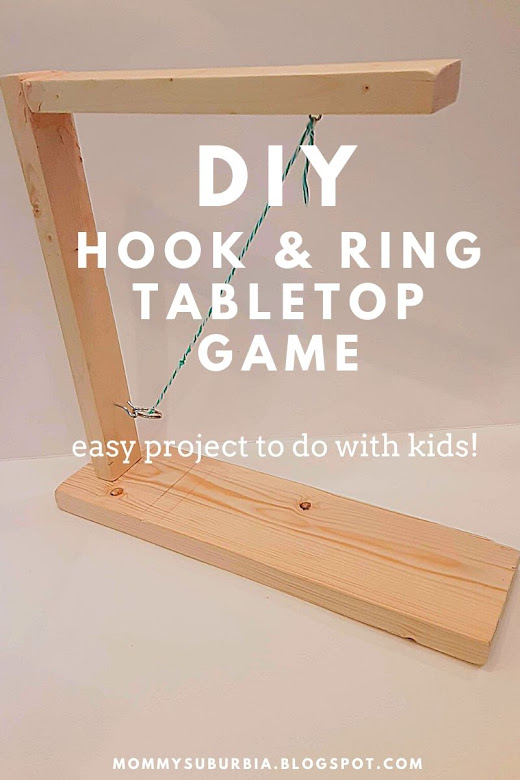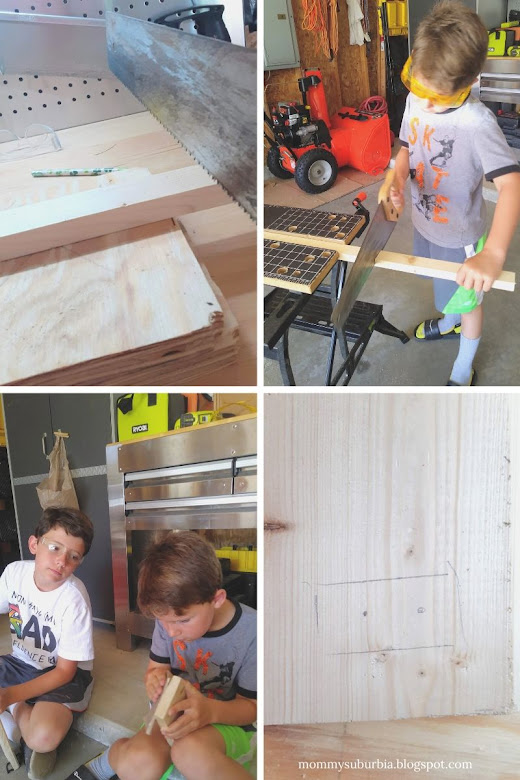Today, I want to introduce you to my top 10 favorite sewing tools and supplies that I use almost every time I sew. Of course there are tons of additional sewing tools available, but this list focuses just on the basic tools a beginner would need when just starting out. As your skills grow and you gain confidence you can begin to add new sewing tools and notions to your inventory.
Oh, by the way I am going to assume that you already have a sewing machine so I won't include that on my list of tools.
10 Must Have Sewing Supplies For The Beginner
#1 Sewing Scissors
A good quality, sharp pair of scissors is a must have for anyone who sews. Having a basic pair helps you cut through fabric and other notions easily. My personal favorite are these Gingher dressmaker's shears that I got from my in-laws for Christmas. I love the weight of them in my hand and how they don't rub or slip when I cut fabric.
 |
| Amazon.com |
Another type of scissors that are handy to have when you are just starting out are pinking shears. Pinking shears cut small peaked triangles into the edge of the fabric as you cut so that it doesn't fray as easily.
#2 Pins & Pin Cushion
When I first started out on my sewing adventure I found it frustrating when the fabric I was sewing would shift a little bit causing seams to get crooked and look wonky. I quickly realized how useful pins were in helping to hold the fabric in place while sewing. Pins were a sewing game changer for me! Now, I have a variety of pins in different lengths since certain projects may require a longer pin or a shorter pin. Pins are an inexpensive sewing tool that are a must have for any level sewing enthusiast.
If you are using pins, you are going to need a pin cushion to stick your pins into so they don't end up on the floor where they can be stepped on! (I may or may not be speaking from experience, OUCH!). There are so many different options, but I find the best pin cushion is the one you will actually use! This might sound strange but if you have a pin cushion that gets in the way while you are sewing you will be less likely to use it increasing the risk for pins on the floor.
Whether you are sewing with a machine or by hand it is very important to have good quality sewing needles.
Did you know that sewing needles are not all the same? Most needles for sewing machines have a color coding or a number coding on the needles to help you determine the best needle to use based on the fabric you are sewing. Sewing a thick fabric like duckcloth or denim is not the same as sewing cotton jersey! If you want your project to turn out and look great make sure you use the proper needle.
#4 Rotary Cutter & Self Healing Cutting Mat
If you are new to the whole sewing thing you may have read this one and have no idea what I'm talking about! That's OK, I will tell you all about these amazing tools! Technically these are two separate tools but since they are used together I've combined them into one tool must have category.
A rotary cutter is used to cut very precise straight cuts through fabric. Unlike scissors, a rotary cutter gives straight smooth cut lines that are very difficult to do with scissors. A rotary cutter has a circular blade that fits onto a straight handle. The blade rotates as you roll it over the fabric to make a cut. The blades are super sharp so be careful when using one!
To keep the blade on your rotary cutter in top cutting condition it is important to make sure you use a self healing mat under the fabric you are cutting. The self healing mat does not dull or warp your blade as you cut making it the perfect surface to cut on. Most self healing mats have measurement lines printed on them so cutting an exact 5" square, or any other length is easy and fast. Self healing cutting mats come in a variety of sizes too!
The reason why the mat is called self healing is because cut lines from the rotary cutter are not permanent. Self healing mats are made from tiny separate pieces that are pressed together to create the solid mat's cutting surface. When you cut on the mat the blade of your rotary cutter actually goes between the tiny independent pieces, separating them and not cutting into the surface like a traditional cutting board.
#5 Sewing Ruler
Depending on the type of project you are working on the type of ruler you will need might vary. Because of this I'm going to highlight two separate ruler tools here.
The first, a flexible fabric ruler is very useful when sewing clothing. I use mine all the time when measuring waistlines, bustlines and hemlines. Since the ruler is flexible I can easily wrap it around my model's body to get a more precise measurement.
The other ruler that I love to use when I need a straight edge to guide my rotary cutter when cutting out fabric for a quilt is an acrylic ruler. Acrylic rulers come in a variety of sizes and like a self healing mat, have markings to help you measure accurately. Acrylic rulers also make a great guide to run your rotary cutter along the edge to ensure a straight cut. These types of rulers are also called a quilter's ruler and are made from transparent acrylic.
#6 Seam Ripper
Whether you are new to sewing or a seasoned pro using a seam ripper to tear out or fix mistakes is a handy tool. This sharp tool makes cutting through those small sewn seams easy and quick. Forget scissors and the risk of cutting the fabric, a seam ripper is all you need.
#7 Thread
Like needles, sewing thread comes in a variety of options. Using the right thread can make or break your sewing project. For example, using thick upholstery fabric on a sheer fabric is a recipe for disaster. Depending on the type of fabric you are sewing you will want to make sure you use the right thread.
Thread is ranked by a number system. A high number indicates a light/fine thread. Medium weight thread has a measurement of 50 weight. It is important to match the thread weight to the fabric weight for each project you sew.
Also, try to match the thread fiber to the fabric fiber. If you are sewing with cotton use cotton thread but if you are sewing with polyester or man made fiber use polyester thread. You may not notice a difference at first if you use polyester thread on cotton fabric but over time the stronger polyester thread may cause the weaker cotton fabric's fibers to break or tear. For any quilting projects it is important to use thread labeled "machine quilting / hand quilting" since this type of thread is made especially for quilting projects.
#8 Iron
This one might sound strange but when I first started out sewing I realized how amazing ironing my seams made my project look. Even today I use my iron to press down seams before I topstitch so that there is less chance of me messing it up!
An iron with multiple settings for various fabrics like cotton, polyester, linen and more delicate fabrics is helpful. I also love using the steam function on my iron to quickly press out any wrinkles before I cut the fabric to size.
#9 Sewing Machine Oil and Cleaning Tools
I learned my lesson the hard way by not regularly cleaning and oiling my machine. Fortunately a local sewing shop fixed the mess, but I was without a machine halfway through a project. There are lots of great YouTube videos out there to teach and show you how to clean and oil your machine. Don't be scared or intimidated, you can do this and save your machine!
It is amazing how much lint collects inside of a sewing machine or under the feed dogs. Investing in the right cleaning tools will help ensure your machine stays in top working order.
#10 Extra Bobbins
I guarantee after you really get into the swing of sewing there will come a time when right in the middle of a project you run out of bobbin thread. Of course you don't want to lose your sewing rhythm so having some extra bobbins filled with the thread you are using for your project is very helpful. Bobbins are pretty inexpensive and usually come several to a pack. It is worth the little bit of money to buy some extra bobbins and have the thread wound on them ready to go.
When you have the right tools sewing can be a very relaxing and gratifying hobby. Make sure when you are ready to give it a try that you have all of the essential tools for success. It is worth the investment!
What are you currently sewing? Share you favorite tools, current projects and other ideas with me in the comments.
Make Your First Rag Strip Quilt
Not sure what to sew as your first project? Let me help you out with a super simple, easy to follow sewing project that is perfect for a beginner like yourself. A rag quilt is very forgiving and always turns out looking amazing! I put together a tutorial for a rag strip quilt that I made as a baby gift that you can check out HERE. The tutorial has pictures and instructions to follow along with as you make your first rag strip quilt.













